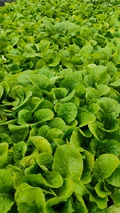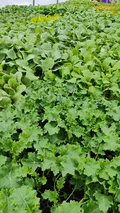TL;DR
Second week of farm work. Imposter syndrome kicked in. The work is getting a little easier, but all it takes is a little rain to complicate things.
Overalls vs. Pants
I have a hard time releasing old jeans to their next life. By that time, they’re comfortable but ragged, stained and ripped…let’s just say, not suitable to wear on a date. By this time, jeans like this are perfect for work on the farm. You can also find great work clothes at your local thrift store.
Pants usually need a belt or suspenders to stay up while you’re bending over, squatting, carrying things, etc. I tend to tuck a long t-shirt in to my pants and then wear a hoodie or something over the shirt in the colder season. This keeps most dirt out of my unders.
Today I tried a pair of Carhartt Bib Overalls. They were $50.00 at Nelson’s a while back because they were the lesser desired Navy Blue color. In the summer time, dark clothes might be a problem as they absorb sunlight and heat up more than light clothes, but we’ll cross that bridget when we come to it.
Rain’s Blessing and Curse
In New England, you can never really predict what the moment-to-moment weather will be very accurately. The plethora of micro-climates means that you may get wildly different conditions and readings than your local weather station, even if it’s less than a mile away.
This morning, almost exactly at 8am on the dot, it downpoured for 12 minutes (where I was). Back where I live, the power went out for an hour. In the greenhouse, we took the time to seed scallions which get planted and harvested whole to include in the CSA shares each week (which is why there are so many all the time).
[CSA member note: how-to’s on easy processing of your share when you get it home…scallions go in a small container with a little water at the roots. They keep growing this way rather than rotting in the fridge.]
The minor downpour resulted in patches of deep muck in the cultivated fields when we finally got out there to plant. Sometimes even just walking through this mud risks losing a boot in it, not to mention being down on your hands and knees planting the dropped seedlings into the soil.
Farming Crews Are Hard Workers
Still, it’s the early/rainy season and there are ways to work around most of the usual surprises nature throws our way. And the crew is hard-working, especially the women, especially the mom. Moms are superheros…they deserve every good thing that comes their way. I’m grateful that these folks understand how I’m on an uphill hike already to get in better shape. I’ve already lost a few pounds, but so many more to go.
The work is repetitive, often requiring lots of physical endurance, but many chances to switch tasks of varying demand on different muscle groups. Others on the crew go to the gym regularly, especially on a day off, to maintain endurance so it’s not as hard when they get back to work.
As a gardner, I never planted dozens of trays of things. At most, I’d plant a few raised beds for others and call it a day. Dropping, planting and row-covering 6 rows that are 300 feet long is a whole different scale…and this is ‘small’ farming. Having a crew, even a few other people, to help makes a huge difference. While doing the fennel today, one member started us all on a “if we had a TV show, what would go into it”, which was great to pass the time. Sometimes, music from a pocket device is okay, but so far I prefer conversation and quiet times listening to nature.
What AI Thinks I Did
As usual, I took audio notes of what I did during the day on my way back home. These then get put in a Google Drive folder, picked up by my homegrown transcription and LLM services, and summarized into the below:
Main Themes:
- Farm work: The intern’s day was filled with planting various crops in the greenhouse and field, including scallions, bok choy, fennel, and pak choy.
- Challenges: The intern faced challenges such as heavy trays, difficult seed germination, handling pests like flea beetles, and adapting to unexpected situations.
- Improvisation: The intern had to adapt to unexpected situations, such as a sudden rain shower and running out of row cover material.
Activities:
- Planting various crops in the greenhouse and field (scallions, bok choy, fennel, pak choy)
- Practicing planting efficiency and consistency
- Patching up torn areas of row cover and applying new material to hoops
Specific Tasks:
- Seeded 12 trays of scallions by hand into 98 cell trays in the greenhouse.
- Took bok choy plants to the field and planted 24 trays of them in two rows with spacing of one foot between each plant and three feet across the row.
- Played with row cover, patching up torn areas and applying new material to hoops.
- Planted a couple dozen trays of fennel and pak choy in adjacent rows.
- Seeded 40-48 trays of pak choy, scallions, and fennel using the same methods as before.
New Things Not Yet Encountered:
- Flea beetles: The intern mentioned that row cover is essential to prevent flea beetle infestations at this time of season.
- Seed germination issues: Some bok choy seeds did not germinate in the trays, and the intern is looking for ways to improve seed germination rates.
Questions and Future Areas of Research:
- What are some effective methods to improve seed germination rates?
- How can the intern optimize planting efficiency while maintaining consistency in spacing and placement?
- Are there any other pests or challenges specific to bok choy and pak choy that the intern should be aware of?
Suggested Actions:
- Practice dropping plants consistently to develop muscle memory and improve efficiency.
- Experiment with different row cover materials and designs to optimize their effectiveness.
- Research methods to improve seed germination rates, such as adjusting soil moisture or using specific seed treatments.
- Consult with experienced farmers or researchers to gain insights on flea beetle management and other pest control strategies.
[end of post]
Enjoy Reading This Article?
Here are some more articles you might like to read next:














